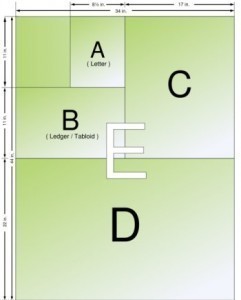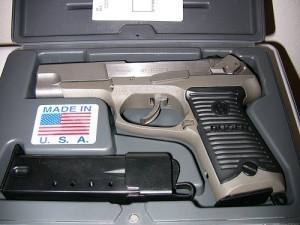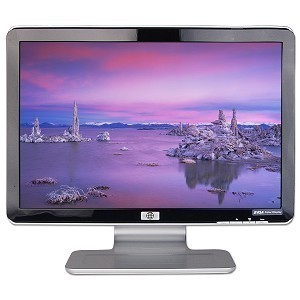ANSI Paper Sizes
ANSI paper sizes are set upon the 81/2 x 11 in (215.9 x 279.4 mm) size, considered the standard paper dimensions in the US. The 8.5 x 11 inch paper is known as “ANSI A”.
The ANSI Series
Aside from ANSI A, “ANSI B” or the tabloid/ledger size is included. ANSI A measures 216 x 279 mm / 8 1/2 x 11 in. It has an aspect ratio of 1.2941. It is known as the letter size and is equivalent to A4 in the ISO standards. ANSI E papers measure 864 x 1118 mm / 34 x 44 in. It is akin to the A0 ISO A size. The ratio is 1.2941.
ANSI B has dimensions of 11 x 17 in / 279 x 432 mm and 17 x 11 in / 432 x 279 mm. It is similar to the A3 ISO. Also known as the ledger/tabloid, it has a ratio of 1.5455. ANSI C measures 17 x 22 in / 432 x 559 mm. Its ratio is 1.2941. It is like the A2 ISO size.
Properties
ANSI paper sizes are akin to the ISO standards in the sense slicing the sheet in half will generate two sheets of the succeeding specifications. Compared to the ISO, its arbitrary ratio means the papers have ratios that alternate. Properly used, you can arrange documents so their contents will fit in ISO sheets or ANSI at a reproduction scale of 1:1.
Other paper specifications are available. Strictly speaking they are not included in the series. The reason is their aspect ratios are different. F, G, H papers are rarely used. G papers are over 22 inches tall and they can be as wide as 90 inches.
There are even bigger formats than this. These papers were developed for use in large scale drawings for vehicles. However, the prevalence of CAD (computer aided design) has rendered these papers obsolete.
Other Information
ANSI paper sizes are not the same as architectural papers. Like ANSI, cutting the papers in half will produce the next smaller size in the series. However, these are used mainly for entertainment drafting. The difference is in their aspect ratio (3:2 and 4:3). The 4:3 ratio is also preferred because they correspond with many computer screen sizes.
These papers are still used today. Not all computer programs have the complete series in their set up. Even so, you can easily change your print settings so the other ANSI specifications will be recognized.





